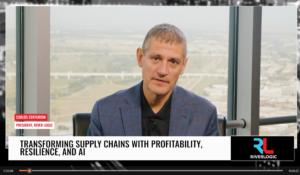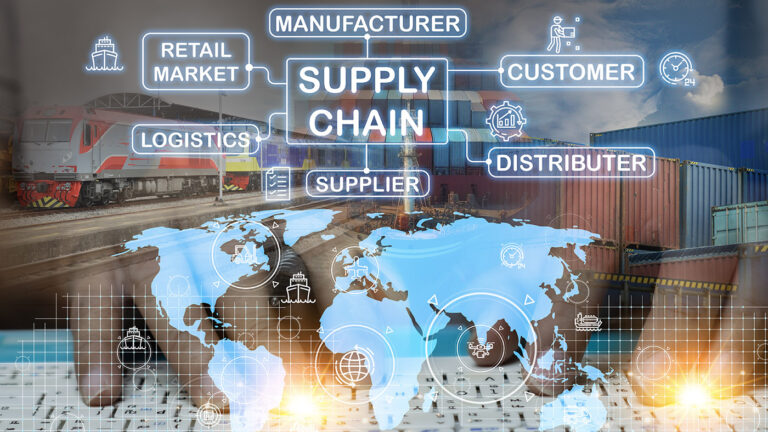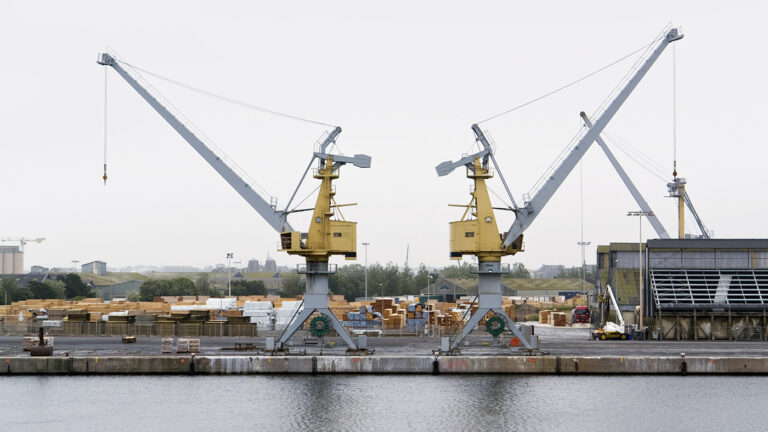Author: Carlos Centurion
As we reflect on 2024, it’s clear that the landscape of supply chain strategy has been fundamentally reshaped. Disruptions have become the norm—ranging from geopolitical instability, inflation-driven economics, and tariff uncertainties to extreme weather events. While these challenges test even the most robust supply chains, they present unprecedented opportunities for organizations ready to adapt and innovate
Adding to this dynamic environment, artificial intelligence (AI) has increasingly integrated itself into every facet of supply chain strategy and operations. This technology, coupled with shifting priorities in how businesses approach resilience and profitability, is shaping the future. Based on our conversations with industry leaders at River Logic, here are three pivotal trends that supply chain practitioners must navigate to thrive in 2025.
1. A Shift from COGS Reduction to Operating Margin Improvement
For years, companies have focused on reducing costs as the primary metric of supply chain efficiency. But today, this approach is no longer sufficient. The competitive edge now lies in maximizing operating margins by adopting a value-focused mindset.
Achieving this shift requires companies to go beyond standard costing and look holistically at their product and customer mix, considering average vs. marginal profits and how sustainability goals factor into the broader value chain. This entails end-to-end modeling of supply chain operations and leveraging dynamic profitability models to optimize decisions that drive long-term value. Read: Why It’s Time to Shift from COGS Reduction to Operating Margin Improvement
2. Resilience: A Core Pillar of Supply Chain Strategy
In the current environment, resilience has surpassed cost and service level agreements (SLAs) as the primary driver of network decision-making. The increasing frequency and severity of disruptions—from natural disasters to geopolitical conflicts—have rendered traditional supply chain planning approaches insufficient.
Achieving true resilience requires a fully integrated value chain model that spans supplier contracts, production processes, and distribution networks. With such a model, businesses can simulate disruptions, quantify risks, and develop proactive continuity plans to maintain stability amidst uncertainty.
This mindset is particularly vital in the context of potential high U.S. import tariffs. Rather than reacting to unknowns or defaulting to traditional cost-cutting measures, companies must adopt a forward-thinking strategy prioritizing profitability across the value chain. By modeling “what-if” scenarios, businesses can proactively identify opportunities to sustain and grow operating margins, even in uncertain conditions.
For example, a well-designed tariff scenario model enables companies to make informed decisions across the entire value chain—from suppliers to customers—helping them achieve higher margins, even when tariffs increase. This approach mitigates risk and positions businesses to turn challenges into strategic advantages. Read: Tariff Uncertainty? Profit-Driven Strategies for Scenario Planning
3. AI: From Hype to Strategic Decision Support
The buzz around AI in supply chain strategy and operations continues to grow, but many companies still grapple with scaling its adoption. In 2024, AI was primarily used for targeted use cases, such as analyzing data for optimal distribution points, risk identification, or inventory forecasting.
However, the real potential of AI lies in its ability to serve as a decision-support tool. Advanced technologies, like River Logic’s Value Chain Optimization solution, enable supply chain practitioners to harness AI to make data-driven, strategic decisions. These tools go beyond task automation, providing natural language interfaces and scenario modeling capabilities that empower leaders to address complex supply chain challenges with clarity and confidence.
Preparing for the Future
As we look toward 2025, the trends shaping the supply chain strategy landscape—profitability through value creation, resilience-driven planning, and AI-powered decision-making—are redefining how businesses operate. At River Logic, we’ve built solutions to these challenges head-on, equipping organizations with the tools to turn today’s disruptions into tomorrow’s competitive edge.
For a deeper dive into these insights, watch the full video where I discuss these key supply chain trends and how to prepare for 2025.
Click on the video below to watch.
Learn how River Logic can support your journey toward resilience and profitability. Meet an Expert.




